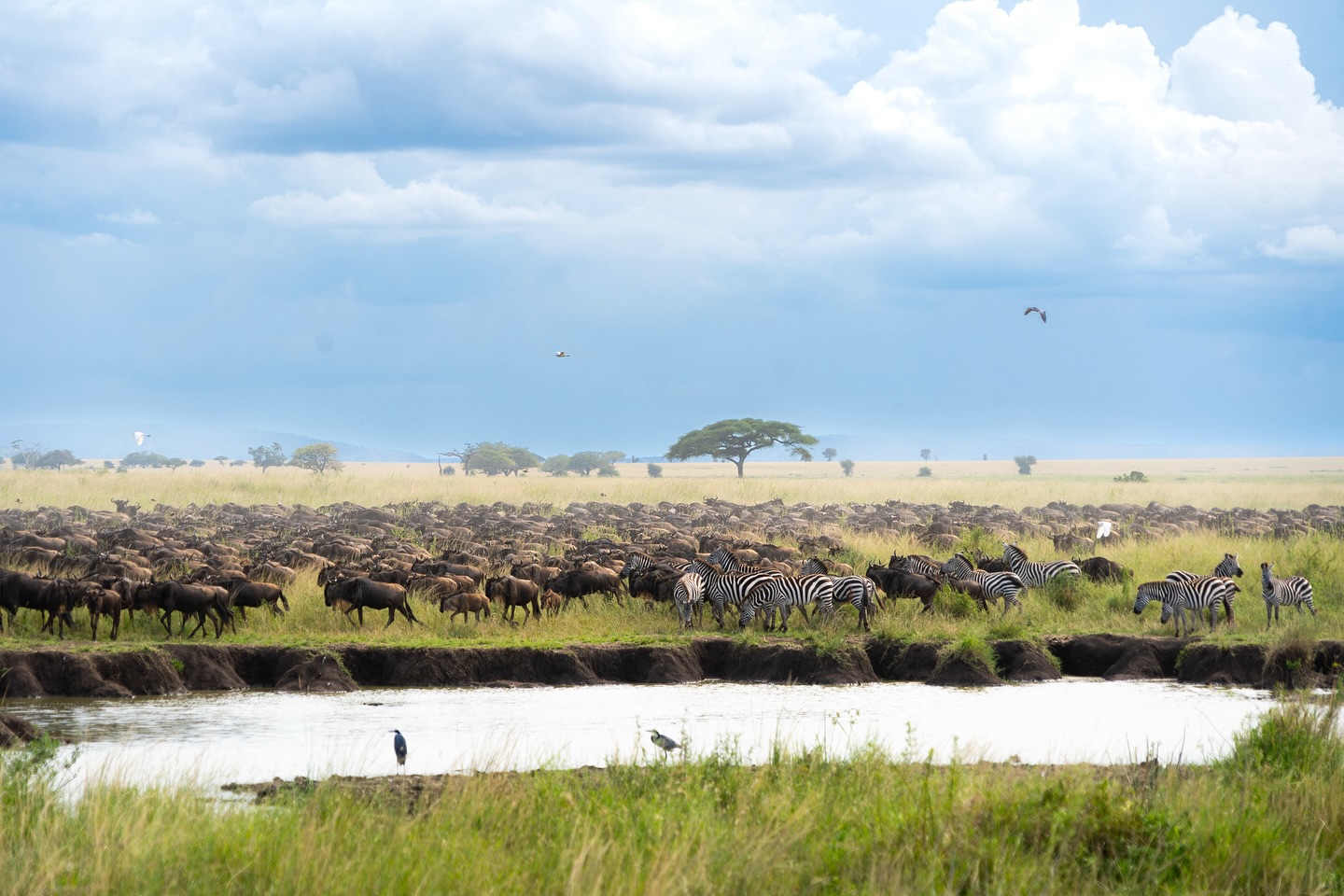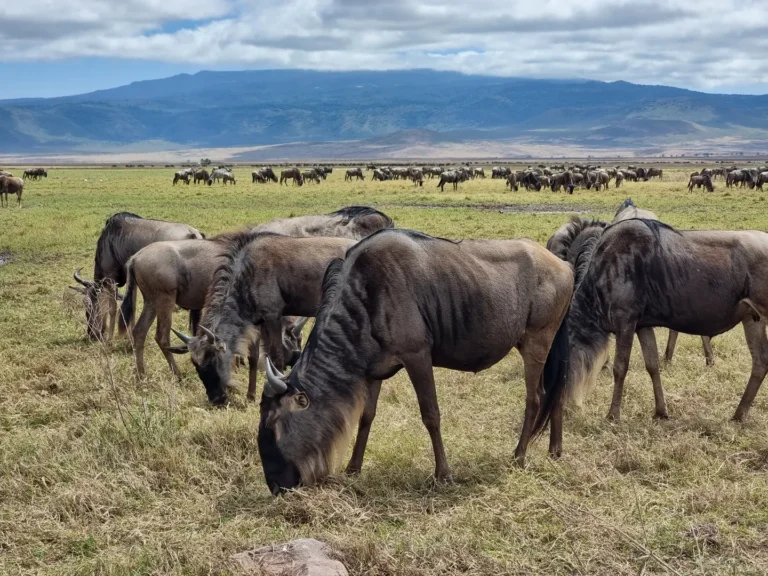Where Does the Great Migration Start?
Great Migration..
The Great Migration is also known as the Wildebeest Migration or the Serengeti Migration. These terms highlight the central role of the wildebeest and the iconic Serengeti ecosystem where much of the migration takes place. Some also refer to it as the Seventh Natural Wonder of the World due to its scale, drama, and ecological importance.
The Migration is one of nature’s greatest paradoxes: timing is absolutely vital, but there is no way to predict the timing of the animals’ movements. We know that the wildebeest (and a smattering of zebra and antelope) will cross the Mara River, but nobody knows exactly when. We also know that rain will trigger the wildebeest to move onto fresh grazing, but nobody knows exactly when the rain will fall.
How Does the Great Migration Work?
The Great Migration is a continuous, year-round cycle where over two million wildebeest, zebras, and gazelles move across the Serengeti in Tanzania and into the Maasai Mara in Kenya, following the rains in search of fresh grass and water. The journey begins in the southern Serengeti between January and March, during the calving season, when around 500,000 wildebeest are born within a few weeks. This attracts large numbers of predators like lions and hyenas, making it one of the most dramatic wildlife spectacles in Africa. As the dry season approaches in April, the herds gradually head northwest through the central and western Serengeti, facing natural obstacles and predator threats along the way.
By June and July, the animals reach the Grumeti River, where they face dangerous crossings, and soon after, they arrive at the Mara River, one of the most iconic and perilous moments of the migration. The crossing into Kenya’s Maasai Mara typically occurs between July and September, drawing global attention. After grazing in Kenya, the herds begin their return south in October, completing the loop as they make their way back to the southern Serengeti by December, just in time for another calving season. This incredible cycle of movement, survival, and renewal is guided entirely by nature and is considered one of the greatest wildlife events on Earth.
Can the Migration River Crossings be Predicted?
No, not even the wildebeest know when they’re going to cross! Some arrive at the water and swim over immediately, Some arrive and spend days hanging around grazing, Some arrive and turn back to where they came from. We wish we could predict the crossings, but no-one can. This is why it is best to have as much time on safari as possible if you hope to see a river crossing.


